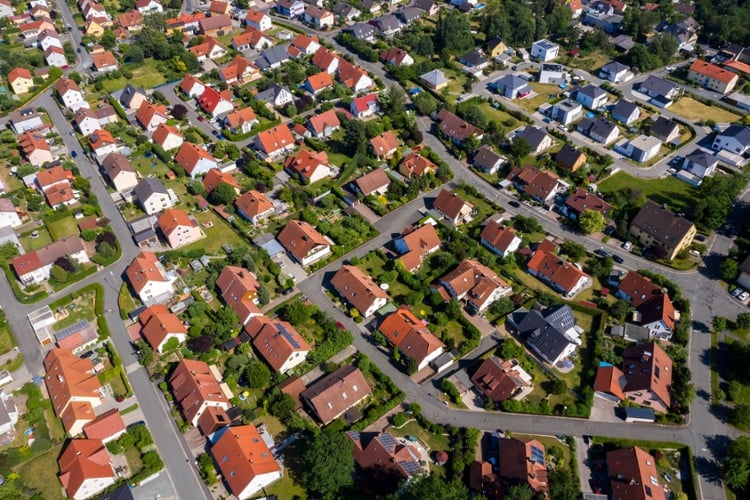There are literally dozens of different ways to invest in real estate.
For example, “cash cow” rental property generates solid predictable monthly cash flow, workforce rentals provide housing to teachers and service workers, and small multi-family property makes it easier to grow a property portfolio fast.
Although there are lots of different ways to invest in rental real estate, there’s one thing that all of these properties have in common. They were selected because the neighborhood analysis indicated a high likelihood the property would meet or exceed the buyer’s investment objectives.
What is a Neighborhood Analysis?
A neighborhood analysis is a report real estate investors create to help calculate the investment potential of a rental property based on the characteristics of the neighborhood the property is located in.
For real estate investors using a buy-and-hold investment strategy, a neighborhood analysis can help reveal how attractive a particular property will be to tenants this year, next year, and even 10 years down the road. Factors such as good schools, and proximity to employment, shopping, and recreational amenities will support the long-term appeal to tenants and buyers when the time comes to sell.
Many active rental property investors combine a larger market analysis with a neighborhood analysis. A market analysis is similar to having a book about a specific real estate market, while each neighborhood analysis makes up the individual chapters of the book.
It’s important to understand how each neighborhood relates to the larger market for a couple of reasons.
First, a specific property may offer what seems to be great potential, but if the surrounding houses are rough and uncared for, the great property may end up being not so great after all. Second, even though the overall market is strong, buying a property in the wrong place can result in market value decreasing and rents eroding over time.

Macro Factors in a Neighborhood Analysis
Let’s begin by looking at some of the macro – or big picture – factors to consider when putting together or reading a neighborhood analysis.
Note that all of these factors contribute to the concept of highest and best use (HBU) in real estate. Developed back in the late 1800s, HBU states that the highest and best use of a property is always the use that produces the highest value for the property, regardless of how the property is currently being used.
1. Location
As the saying goes, the three most important things about real estate are ‘location, location, location.’ That’s actually another way of describing the highest and best use of a piece of land or property.
Even though there is a strong demand for single-family rental houses and small multi-family property in most real estate markets, a neighborhood analysis may discover that specific parts of a market have problems.
Sometimes, developers push the envelope by building in fringe areas that are underserved by transportation and amenities, making housing in the area difficult to rent. So, while the overall market might see a positive demand for housing, specific submarkets or groups of neighborhoods may be negatively impacted due to the location within the greater market area.
2. Social
The social macro factor is somewhat subjective, but important nevertheless. In part, that’s because many tenants, and sellers and buyers, may perceive a property to be better or worse than the market value might suggest, simply because they believe that it is.
Property address is one example of a social factor. For example, a house along North Michigan Avenue (also known as The Magnificent Mile) in the Gold Coast neighborhood of Chicago has more social value than a bigger property four blocks away.
A good school district is another example of a social factor used in a neighborhood analysis. Even if a tenant doesn’t have school-age children, being in a highly-rated district implies that the neighbors and houses will be ‘better’ – and the rent somewhat higher - than those in a school district with a lower rating.
3. Physical
Physical barriers or ‘dividing lines’ such as canals, railroad tracks, highways, hills and mountains are the third macro factor to consider when reviewing a neighborhood analysis. In some markets, a house that is located on the ‘wrong side of the tracks’ may be worth thousands of dollars less than a similar property on the opposite or ‘right’ side of the tracks.
However, the right railroad tracks can also increase property value if the tracks are used for mass transit. That’s because property located in transit-oriented developments or close to public transit in urban areas usually sells and rents for a premium price.

How to Create a Neighborhood Analysis
After reviewing the macro factors of a real estate market, the next step is to drill down and create a neighborhood analysis to gain a better idea of your potential return on investment.
There are a number of key statistics used to analyze the investment potential of different neighborhoods within the same city or town:
Neighborhood ranking
- Home values
- Population growth
- Employment and unemployment rates
- Median income levels
- Owner-occupied homes vs. renter-occupied homes
- School district ratings
- Educational attainment
- Crime rates
Where to find: Analyze data from 72,000 U.S. census tracts or use the Roofstock Neighborhood Rating algorithm to generate a neighborhood rating for any single-family home in the U.S.
Rental analysis
- Market rental rates
- Rental income
- Vacancy rates
- Percentage of renter-occupied households
Where to find: Zillow Rental Manager for a free Rent Zestimate, Rentometer to compare the current property rent to other similar properties nearby, and RENTCafe.com to see check the rents of nearby apartment buildings.
Financial data
- Property asking price
- Comparables of recent sales, pending sales, and expired listings
- Historical rental income for turnkey property
- Cap rate comparing net operating income (before paying a mortgage) to market value
- Cash-on-cash return
- Gross yield
- Net cash flow
- Annualized return
- Total return
- Appreciation potential
Where to find: Local real estate agent prepares a CMA (comparative market analysis or comps) using data from the MLS, Zillow by selecting a specific market then searching for rental property, the Roofstock Investment Property Marketplace for single-family houses and small multifamily property.

Creative Research to Choose the Right Neighborhood
Researching neighborhood statistics and crunching the numbers is one good way to compile a neighborhood analysis. But, before investing a large amount of capital in rental property, it’s important to do everything you can to ensure the area is the best choice.
Here are six creative ways to research the right neighborhood for your next investment property:
1. Review the enrollment trends in the schools closest to your intended purchase to learn if the school district and area is growing.
2. Research building permits to identify new construction and the amount of property being significantly updated to help gauge the future demand for property and price appreciation trends.
3. Make the most of your MLS sales comps by digging deep into data and analyzing statistics such as:- Days on market
- Median sales price
- Median price per square foot
- Percent of price change during the listing period
- Difference between original list price and final sales price
- Reasons why listings were taken off of the market or expired without being sold
4. A large number of “For Rent” or “For Sale” signs are a warning that a neighborhood isn’t as good as it might seem to be on paper. That’s because a vibrant area that’s good for investment should have low vacancy and a high level of demand instead of one street after the other loaded with yard signs.
5. Driving the neighborhood – or having someone from your local real estate team take a drive – is a great way to get a feel for the neighborhood. Ask them to explore the neighborhood at different times of the day and on different days during the week, including weekends.
Looking at things such as how well the front yards are kept up, where cars are parked, and the overall pride of ownership is a great way to understand the individual personality of the neighborhood you’re thinking about investing in.
6. An easy way to determine if a neighborhood is trending upward is by the amount of development and new businesses opening in the immediate area. Commercial real estate investors and residential property developers invest millions of dollars on projects only after they’ve done extensive research on the immediate market. Rental property investors can increase their odds for success by buying property where the big players are building.
Final Thoughts
One of the best things about a neighborhood analysis is that you can use the same system to analyze the investment potential for any area in the country.
When you’re monitoring rental property opportunities on an on-going basis, a neighborhood analysis can help you to quickly learn if a new property is worth taking a closer look.









